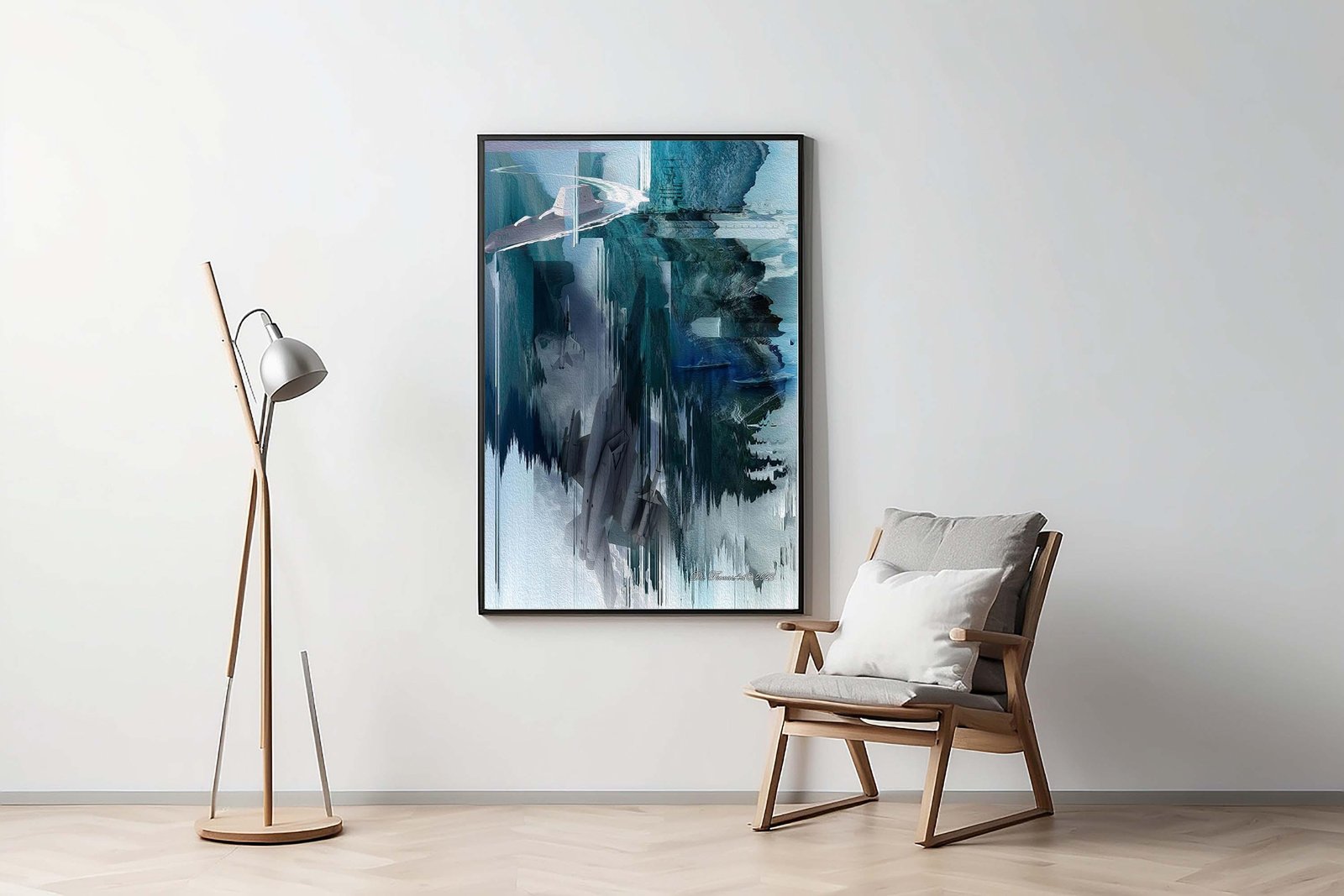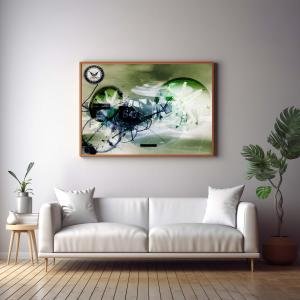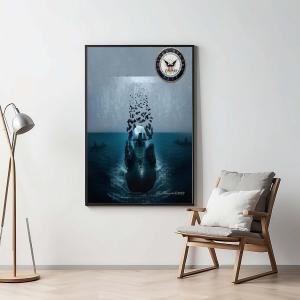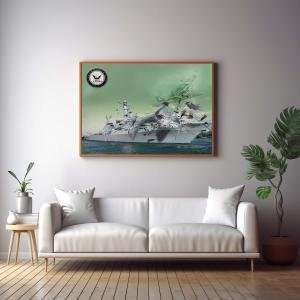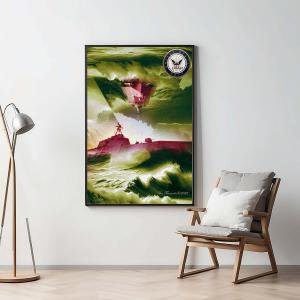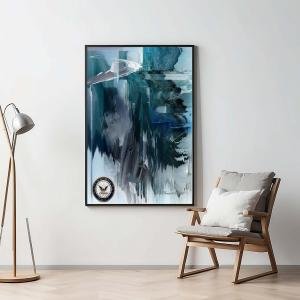Echoes of Power: Navigating the Digital and the Oceanic
Creating this piece felt like crafting a bridge between the past, present, and future of naval power. The Boeing EA-18G Growler , positioned centrally in the composition, serves as an anchor to the modern technological capabilities of the U.S. Navy. This aircraft, known for its electronic warfare abilities, is not just a symbol of physical power but of the invisible battles waged in today’s warfare—jamming, surveillance, and digital dominance. I chose the Growler because it represents how the battlefield has shifted from raw firepower to control over information and electronic systems. The plane’s angular form cuts through the abstract background like a spear through the fog of war, sharp and decisive.
Please see Below for Details…
Hotline Order:
Mon - Fri: 07AM - 06PM
404-872-4663
To the right, the USS Zumwalt cuts across the water with stealth and precision. This ship is not just a destroyer—it’s a symbol of naval innovation. Its sleek, futuristic design speaks to the cutting-edge technology that the Navy invests in, but it also exists almost as a ghostly figure here, shrouded by the layers of texture and color. The blue and teal hues that dominate the artwork echo both the ocean’s calm surface and the digital interface of modern naval operations. Blue, as always, is the color of depth and trust—it reminds me of the ocean’s vastness and the trust that naval forces place in their advanced systems. Teal, blending the natural and technological, reflects both the sea and the world of cyber warfare.
Just behind the Zumwalt, I placed a battleship —an homage to naval tradition. Even as we innovate with advanced stealth destroyers and electronic warfare planes, the battleship reminds us of the Navy’s roots in raw firepower and its historical might. It’s barely visible, a shadow of the past, but its presence looms large. The battleship is a reminder that tradition and history still influence today’s decisions.
The U.S. Navy Seal , located in the lower left, grounds the entire composition in its long history of service and dedication. It's a symbol of continuity amidst change—no matter how advanced our technology becomes, the Navy’s core mission and values remain unchanged.
One of the most interesting aspects of this artwork for me is the abstract glitch effect —the fragmented, broken textures that sweep across the image like digital interference. I wanted to convey the idea that in modern warfare, things are not always clear. There are blurred lines between what we can see and what’s hidden, between reality and the digital layer that overlays everything. This glitching, distorted effect is also a metaphor for the challenges of the modern battlefield, where electronic warfare, misinformation, and cyber attacks have as much influence as physical combat.
The layered textures , which resemble either cliffs or crashing waves, speak to the Navy’s relationship with the unpredictable and powerful nature of the sea. The ocean is a force that can’t be controlled, only navigated, and I wanted to capture the tension between human-made technology and the vast natural forces that still shape naval operations. The contrails or wake from the USS Zumwalt and the aircraft are signs of motion, of cutting through these unpredictable forces with precision. They show how the Navy can carve its path through even the most chaotic environments.
Emotionally, this piece is about balance—between old and new, between the visible and the hidden, between raw power and digital strategy. The blue and teal colors create a sense of both calm and urgency. Blue, the color of trust and tradition, is ever-present, while teal introduces a hint of the unknown, of modern technology’s unpredictable impact on warfare.
When I was working on this, I felt a mixture of pride and unease. Pride in how far naval technology has come—how we’ve developed ships and planes that can perform in ways that were unimaginable a generation ago. But unease, too, because with this technological power comes a new level of responsibility, one that involves not just protecting borders but controlling information, ensuring cybersecurity, and navigating ethical dilemmas. The glitches , to me, symbolize this uncertainty—the unpredictable nature of modern warfare, where the enemy isn’t always visible and the rules aren’t always clear.
In personal reflection, this art speaks to the tension between clarity and distortion, between the past and the future. The Navy, with its long tradition, must now adapt to a world where battlefields are both physical and digital. The USS Zumwalt and Boeing EA-18G Growler represent that adaptation, cutting-edge tools for a world where control over information is as important as control over the sea. Yet, amidst this modernity, the old battleship and the Navy seal remind me of the unbroken line that connects the present to the past.
This piece is about that balance—between new technologies that expand our capabilities and the traditions that remind us of the core mission behind it all. The glitches, the ships, the planes—they all exist in a layered reality that reflects the complexity of modern naval warfare, where power is not just measured in firepower, but in control over the invisible forces that shape our world.
Add your review
Your email address will not be published. Required fields are marked *
Please login to write review!
Looks like there are no reviews yet.

